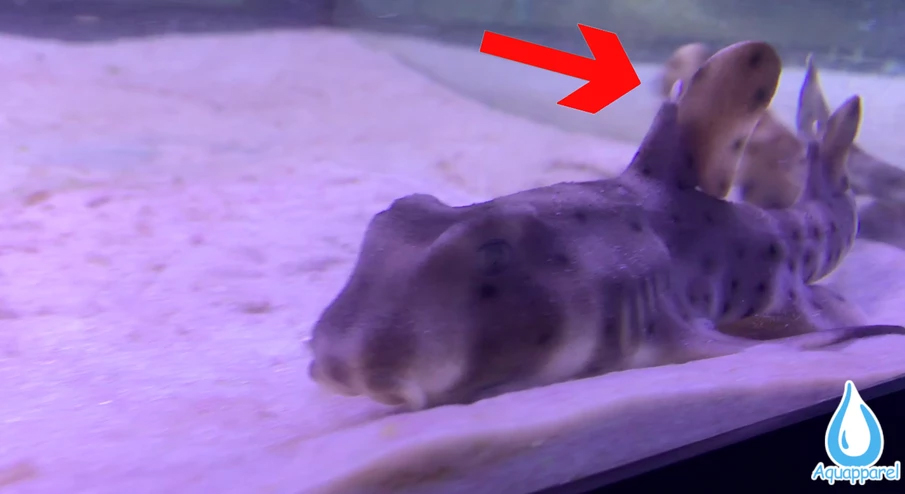Typically Horn Sharks are primarily loners. They spend their entire life in a area no larger than 3,300 square feet. In the wild they will migrate to deeper water in order to stay warm during the winter, but they have never been recorded to travel more than 10 miles away from their home.
They are relativity small reaching a max length of 2 to 3 feet as full grown adults. The males are typically smaller than the females. So with their small size and tendency to be alone, they can become easy prey to larger species of sharks and fish.
As you see here on Link’s first dorsal fin there is a well defined spine as well as one on his second dorsal fin.

These are used as protection since these sharks are pretty slow, sluggish and stay mostly on the bottom of the sea bed. It’s not too hard for a larger species to attempt to bite a horn shark and eat them. But actually holding onto their bodies and eating them is a bit of a challenge because of the spikes. The spikes are said to be mildly venomous as well although not very much is known about the venom from what I could find while researching. However, getting stuck by one of these spikes can be extremely painful and will deter a larger predator from consuming the horn shark.
The Horn Shark’s diet consists mainly of small crustaceans and bony fish. They have a pretty gnarly jaw.

Generally these sharks are not a threat to humans but when harassed they have been known to bite. So unless one of these sharks are used to humans handling them and will allow you to pet them, I would advise against it.
To learn more about small species of benthic sharks, check out the Aquarium Shark Guide section of my website.
